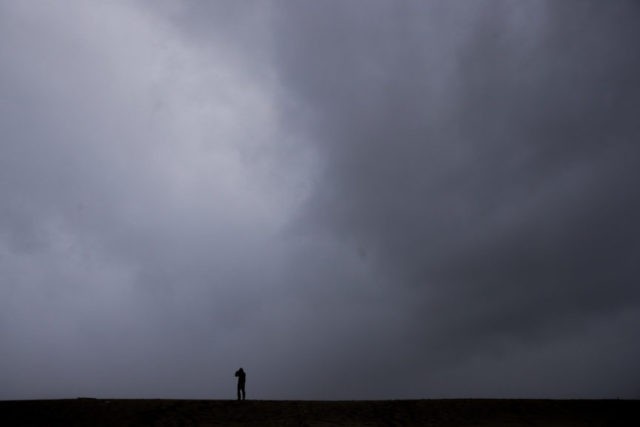The National Weather Service’s latest observation for the oscillation between years of El Niño versus Lina Nina weather patterns is currently neutral, but climate forecasters predict early signs of a strong El Niño could drench California again next year.
Breitbart News warned in April of 2016, that a ‘Rambunctious La Niña to Follow Docile El Niño,’ as the sea surface temperatures in Pacific Ocean equatorial waters were starting to flip from a super-heated all-time-high of 10.6 degrees Fahrenheit above normal to unusually cold temperatures of up to 5 degrees Fahrenheit below normal.
The La Nina extremely cold sea surface temperatures from July through December 2016, saw Pacific Ocean equatorial sea surface temperatures fall up to 5.4 degrees Fahrenheit below average for most of the central and eastern Pacific Ocean. The extraordinarily cold surface water sucked a warm atmospheric river called the pineapple express eastward.
California’s Central Valley and the Sierras have received about 220 percent of the average rainfall for this time of year. Unfortunately, the National Service Water Center is predicting another warm two-day storm will hit the Central Valley by next Wednesday.
International Research Institute for Climate and Society (IRICS) are reporting good news that this rambunctious La Nina should be fading soon with the equatorial sea surface temperatures having warmed back to near-average across the central Pacific. They predict a 75 percent chance through spring of a “neutral” Pacific Ocean wind pattern that would end the rainfall with a return to a clockwise wind rotations from Polynesia, up to Japan, across to Alaska, down the West Coast, and then back across the Pacific.
But IRICS climatologists announced on March 9 that the fast-paced sea surface temperatures rise in February of between +0.6 and +3.9 degrees Fahrenheit for the Eastern Pacific indicate that a 50 to 55 percent chance that a strong El Niño will appear by fall. The El Niño cyclical sea surface warming trends in the equatorial Pacific Ocean are expected to interrupt and partially reverse prevailing westerly trade winds.
During the 2015 El Niño, the eastern two-thirds of the United States experienced a very mild winter a below-average number of hurricanes and 72-degree weather in New York on Christmas Day.
California experienced its usual El Niño cold winter with Los Angeles freezing on Christmas Day with 59-degree weather. But the torrential rain-producing storms that were expected to drench the West Coast were pushed south by an atmospheric low-pressure ridge. The heavy wet storms then curled up to hammer Texas and the southern Plains to cause mass flooding, widespread property destruction, and over 40 deaths.
There is a very high probability that an El Niño next year will further drench California.

COMMENTS
Please let us know if you're having issues with commenting.